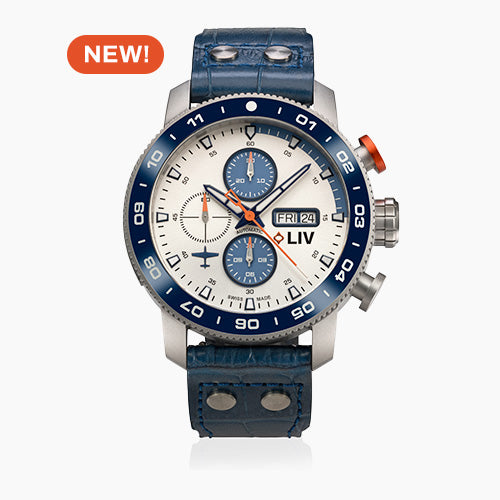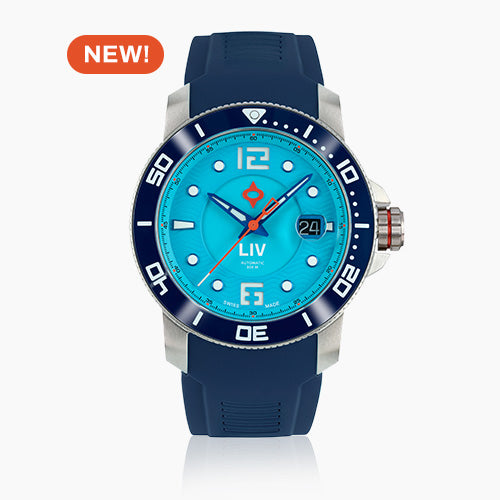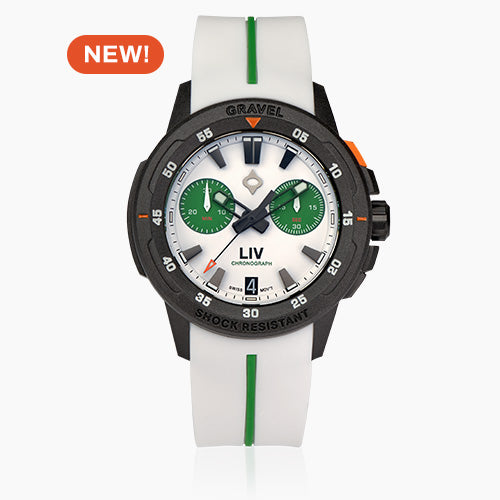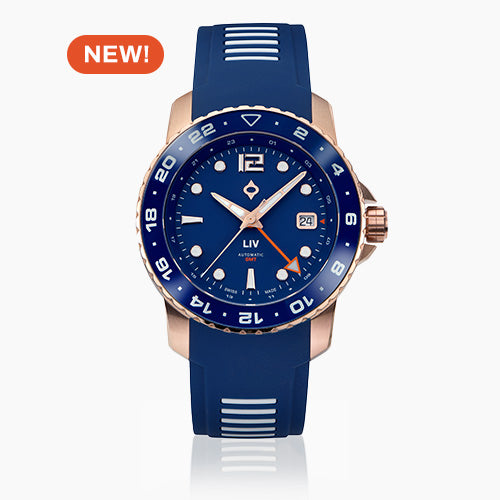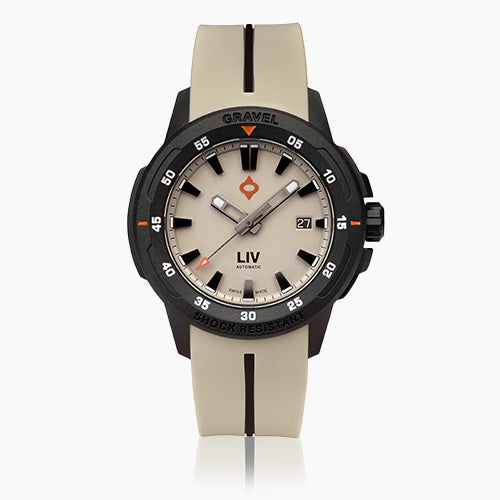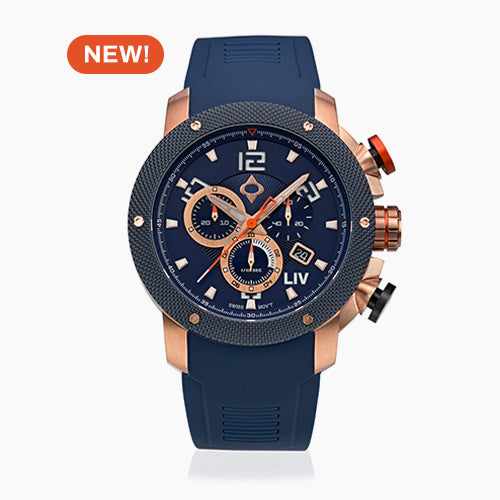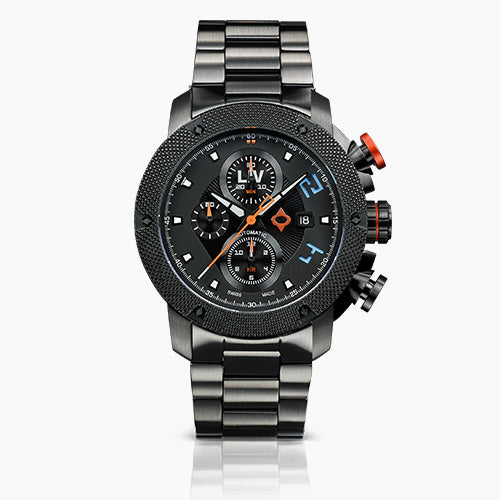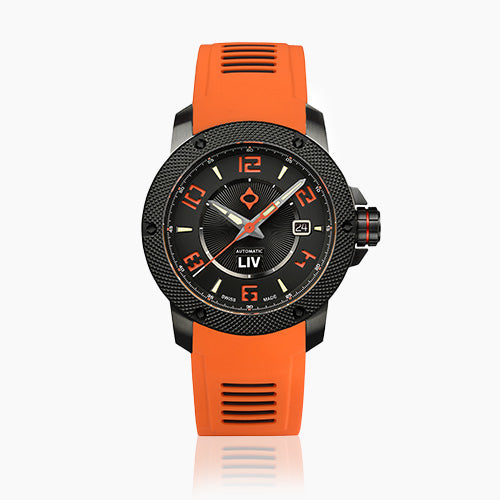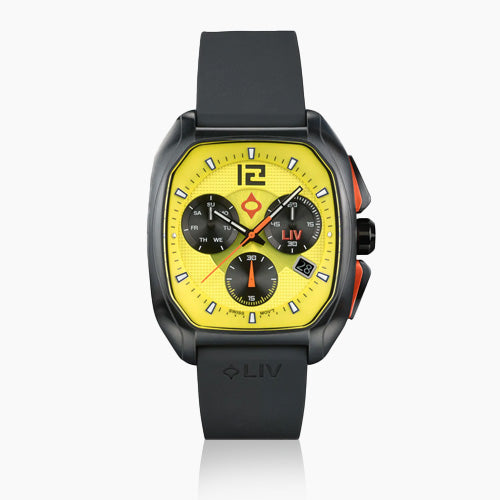
Watch Collecting: The next level
Share
LET'S GET COMPLICATED
Complications generally carry a negative connotation. Watch collecting may be the only activity where complications are valued and prized.
So, what are complications in the horological world? Here is my take on what this means:
A timepiece at its most fundamental tells you the hour and minute. Anything more in terms of the mechanism and display of time is a complication a watch maker must create and add to the movement.
In truth, a display of the hours and minutes is all you need to tell time. But, where's the fun in that?
Complications make the design and manufacturing of the movement more complicated while at the same time add interest, useful functionality, cool features, and allow the watch companies to showcase their talents. And, make for really interesting and collectible watches.

WHAT ARE SOME COMMON COMPLICATIONS?
- A sweep seconds hand.
- A sub-dial seconds hand.
- An alarm function.
- A date (day of the month) display, either as a window showing the date or as a sub-dial, or, as a sweep hand pointing to a number on the outer edge of the dial.
- A large date display - with one or two separate windows.
- A day of the week display.
- A day-date display.
- A perpetual calendar with day, date, and year, often executed with a chronograph function.
- A day-night display.
- A moon phase display.
- An open heart display.
- A GMT indicator.
- Dual movements to show two time zones.
- Fly back hands for a variety of features.
- A tourbillion.
- A chronograph function - two, three, or four "eyes" (sub-dials).
- A power reserve indicator.
- A skeletonized movement.
- A minute repeater movement (like a tiny Big Ben on your wrist - press the button and it chimes out the hour and minutes).
- Any combination of the above.
I surely missed some complications, but you get the point. Complications create an incredible variety for collectors.

WHICH BRINGS US TO THE QUESTION: SHOULD YOU CARE?
The answer is, "You should, but don't have to care."
Your collection will reflect your taste and interests. And, to some extent your budget. Perpetual calendars, tourbillons, and minute repeaters are at the top of the heap in terms of price...as in tens of thousands of dollars. A million dollars for a watch? Yep, they exist.
If you wanted to build a collection of two-hand watches and focus on different dial materials and patterns, unique case designs and finishes, and so forth, you could. Actually, you might find them hard to come by given the popularity of complications.
You may build your collection around watches with power reserve indicators. These are the equivalent of gas gauges for automatic watches. As the mainspring winds down, the hand moves towards 0, just like in your car.
The bottom line is this: complications make watch collecting more fun and interesting.

DO YOU NEED A WINDER?
A watch winder is a device the holds your automatic watch and rotates it to keep the mainspring wound. Mechanical movements, automatic and hand-wound, both benefit from having their mainsprings work constantly.
Why? Because moving watch parts keep the tiny amounts of lubrication around the pivot points from "gumming up." I do believe that is the technical term for it (not really). Gummy lubricants increase resistance which reduces timekeeping accuracy.
Parts of a winder
Winders, like watches, come in a dizzying number of variations. Unlike the timepieces they cradle, there are fewer components. Let's take a look at these.
The case - This is the "box" that houses the motor, the head, and the controls. It can be utilitarian (I have seen skeletonized models) or an artfully crafted piece of furniture. The case may include a jewelry or valet tray. It may have a cover over the heads or not. It may be locking. The size of the case depends upon the number of heads. A travel winder can fit in a carry-on while others can fill an entire wall.
The heads - These are the cups and pillows that keep the watch secure while the winder is operating. The cup should be lined with soft material to protect the finish of your timepiece. The pillow should also be covered in similar materials and have sturdy foam filling. Once set into the cup, the watch should not move as the motor rotates.
Note: Heads come in different diameters. If you have some larger watches (50 mm+), be sure the winder head can accommodate it.
The motor(s) - It is common for multi-head winders to have a drive motor for each cup. This allows you to turn off any motor not in use. Outside of travel models, winders typically run on standard household voltage. Place the winder near an outlet, plug it in, insert the watch, and turn it on.
The controls - The most basic winder provides switches that allow the motor to turn clockwise or counterclockwise (bi-directional). This is important because some movements should only be wound in one direction. Check your owner’s manual and watch specs for details.
The other consideration is this, each movement has a recommended number of rotations for optimized winding. Some winders can be programmed to rotate a specific number of turns. Others also allow you to alternate the rotation back and forth. The nature of your movement will determine how elaborate your controls should be...or, your desire as a gadget freak to have cool new toys may rule. It’s a no-judgement decision.

As you start your collection, a winder may not be an immediate necessity. If you have one or two automatics, you can keep them wound by wearing them or hand winding (certain movements allow this). Once you get more than two automatics or are to the point where you do not wear them often enough to keep the mainspring ticking, time to consider a winder.
Your first winder
Here are the specs for your first winder:
- One or two heads (go for more if you find a deal).
- Bi-directional winding capability.
- Heads large enough to accommodate your largest watch.
Will my automatic watches die without a winder? No, they won't. It may take many years for the lubrication to gum up and start impacting accuracy. With the synthetic lubricants used today, that event horizon is even further out. But your finest watches deserve this treatment at some point.
Basic tool set
When it comes to your watch tools, the ones you need depend on what you want to be able to do. At the very least, you want to be able to size bracelets and change straps. To accomplish this, you need a spring bar tool, a pin punch, and a pin hammer.
The spring bar tool - You can spot this tool by the tiny, two-prong fork in its tips. You use these to push the strap back and engage a ridge in the spring bar that holds the band to the case. It is also handy when reinstalling the spring bar.

How do you use this tool? Watch makers put handy little arrows on the bracelet links you can remove to size your watch. You set the bracelet on edge (over a space so the pin can come out), insert the pin punch, and gently drive the pin free using a regular hammer or a pin hammer.
To reassemble the bracelet after you have removed the links, insert the proper end in the side of the bracelet where it came out (going against the little arrow). Using your hammer, tap it back into place and use the pin punch to seat it below the surface of the bracelet.

Cleaning your watch
Cleaning your watches (case, bracelet, and band) is not rocket science. It isn't even chemical science. In fact, it's as more about what not to do than what to do.
First up, the don'ts: Most watches of any quality are designed to be rugged and long-wearing, at least mechanically and physically. Having said that, the finishes of watches are subject to cosmetic damage. For sample, your watch may have an ionic plating to give it a glossy black or gold finish. These can wear off over time, and via overzealous cleaning. Your timepiece may also have fine finish marks that can be damaged in cleaning.
- Don't use anything abrasive to clean. This includes wire brushes and cleaners. Hey, it may be the barkeeper's friend, but it isn't the watch maker's.
- Don't use caustic or acidic cleaning agents, say like oven cleaner or grease-off.
- Don't use strong solvents. A good cleaning agent to have on hand is a lens cleaning solution. Covid alert: Refrain from cleaning your watch with hand sanitizer!
- Finally, never clean your watch under running water. Yes, it is pressure tested to 100 meters, but it can't handle streams of water. You'll have to trust me on this one.

Saddle soap is a must-have for cleaning leather straps.
Build your cleaning kit
Here's all you need to keep your timepieces looking good.
- Mild liquid soap - either hand or dish, say like Dawn. If it's gentle enough for a baby duck...oh, wait, I just channeled their ad!
- Saddle soap for leather bands.
- Soft cotton rags - a washrag will work.
- Cotton balls and q-tips - for those hard to reach spots.
- Lens cleaning solution.
- An old toothbrush.
- A microfiber cloth - like the ones that often come with better watches.
As you likely have surmised, different materials require different cleaning techniques.
Cases, crystals, bracelets, and rubber/silicone bands
Mix up a small amount of warm, soapy water. Using the washrag, cotton balls, q-tips, and the smallest amount of soap mixture necessary, gently wipe away the dirt and grime.
Helpful tip #4: If the bracelet is especially dirty, consider removing it and have a jeweler ultrasonically clean it.
Wipe the watch dry with a cotton cloth and then use the lens cleaning solution to clean the crystal(s).
Finish it up with a buff using the microfiber cloth.
Leather, exotic skins, nylon, and fabric
Leather should be cleaned using the same technique described above, but with saddle soap instead of liquid soap. Follow the directions on the tin.
Exotic skins like snake and lizard should never be cleaned wet. Let them dry thoroughly and use an old toothbrush to gently remove dirt. Always brush with the scales.
Nylon and fabrics benefit from dry cleaning as well. Sure, nylon might take to water okay, but if you can do the job using the toothbrush technique, all the better.

SHOULD YOU EVER OPEN A WATCH'S CASE?
Ah, now this is a tantalizing question. The short answer is, "It depends." Since you are reading to learn, let me answer in more detail.
Never open your watch's case if any of the following are true:
- The timepiece is under warranty - opening the case will void it.
- Your manual says not to open it under any circumstances. You did read the manual, right?
- It is a mechanical watch, automatic or hand-wound.
- You do not have the proper tools.
Better? Good, please read on. There are situations where you can open the case. As you might suspect, these are the exact opposite of some of the ones above. But, before getting into those situations, let's look at the tools required and why you might want to open your case.
REQUIRED TOOLS
There are three common types of case backs: snap-in, screw-down, and screw-in. No, this isn't a typo, the last two are different. A screw-down case back is secured with screws. A screw-in case back is threaded itself and must be removed with the proper tool.
You'll need one or all of these, depending upon your collection:
- A case back knife for snap-in case backs. It is a dull blade designed to fit under a lip on the case back to pop it off.
- Jeweler's screwdrivers for screw-down backs (preferably magnetic - these hold the tiny screws better).
- A case back wrench with a set of pins for different notch styles. A three-point is highly recommended. You select the proper point type, use thumb wheels to match the spacing of the pins to the case back, and twist off the back.

A case back knife
BATTERY REPLACEMENT
It isn't always convenient to send your watch in to have the battery replaced or take it to a jeweler. If you have the correct battery and the tools (as detailed above), this is a great reason to look under the hood of your watch. Plus, you can help family and friends replace their batteries too. Be sure you are not voiding their warranty.
Battery replacement sounds innocuous enough, and I do it all the time. However, there are a couple of risks you take merely replacing a battery, risks I have experienced myself.
- You can lose the micro-screws that are used to secure the case back (screw-down backs) and that hold the battery retaining component in place. Think of this like losing a lug nut when changing a flat tire. Solution: Put them in a small glass dish and set aside. Be sure to keep the battery screw separate from the case back's as they are likely different sizes.
- You can lose the small metal bridge that holds the battery in place. Solution: Keep gentle pressure on it while removing the screw, and then remove it with tweezers. Place it in the glass dish with the screws.
- You can damage the very thin gasket that provides the water resistance rating. Solution: Be gentle taking the case back off so the gasket doesn't stick and tear or get damaged some other way.
Helpful hint #5: Take a photo of the movement before removing the battery. It helps you orient the metal retaining bridge properly later.

Never remove the case back from a mechanical watch unless you know what you're doing or you don't mind sacrificing the watch to your efforts to learn!
SO, YOU WANT TO WORK ON/ADJUST THE MOVEMENT?
This is not recommended unless you are a trained or aspiring watch maker. Like a lot of products sold today, watches should have a label on them stating, "No user-serviceable parts inside." With the battery exception noted above, this is true. Do not lightly take off a mechanical watch's case back.
If you are interested in learning more about horology, like your author, and have a watch you can sacrifice to your education, go for it. I have replaced movements and turned an old pedometer into a watch. I have also broken a few movements. None caused me any grief and I enjoyed the experience. This is a proceed at your own risk action.
WRAPPING IT UP
Hopefully, you have found these two articles useful in your quest to start a watch collection. As in every other walk of modern life, watch collecting is changing. The advent of boutique watch companies that sell directly to you, the end-user, is one of the more interesting. Still, even with change, it is hard to beat the satisfaction of owning a quality wristwatch. Or, several. Welcome to the family, I hope you enjoy building your own collection of watches.
